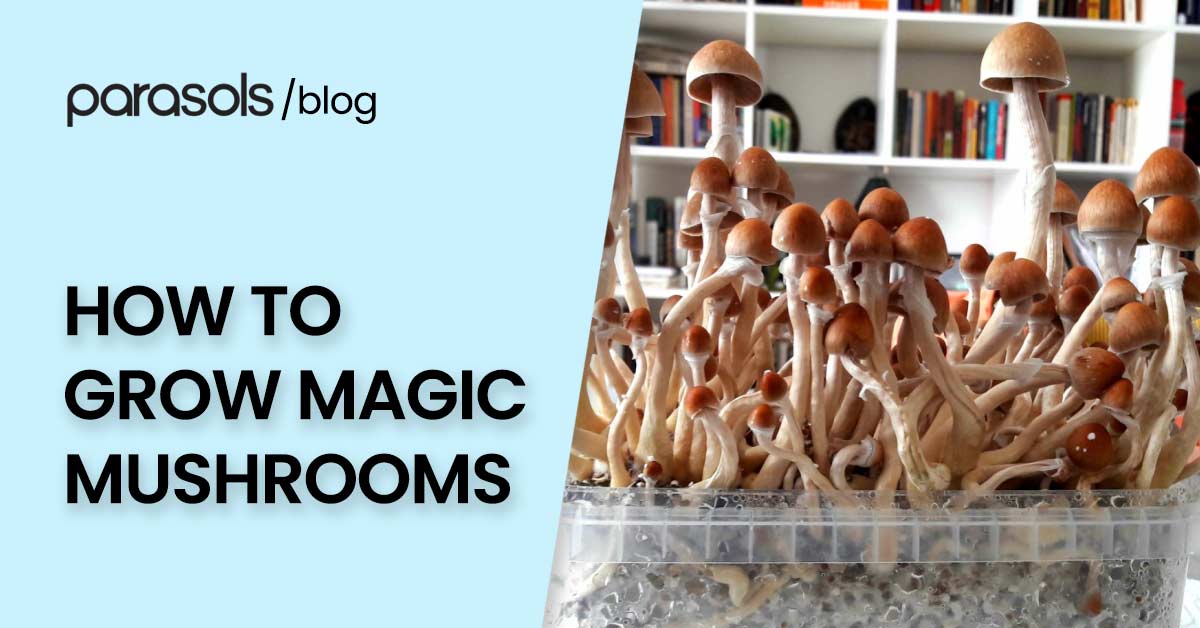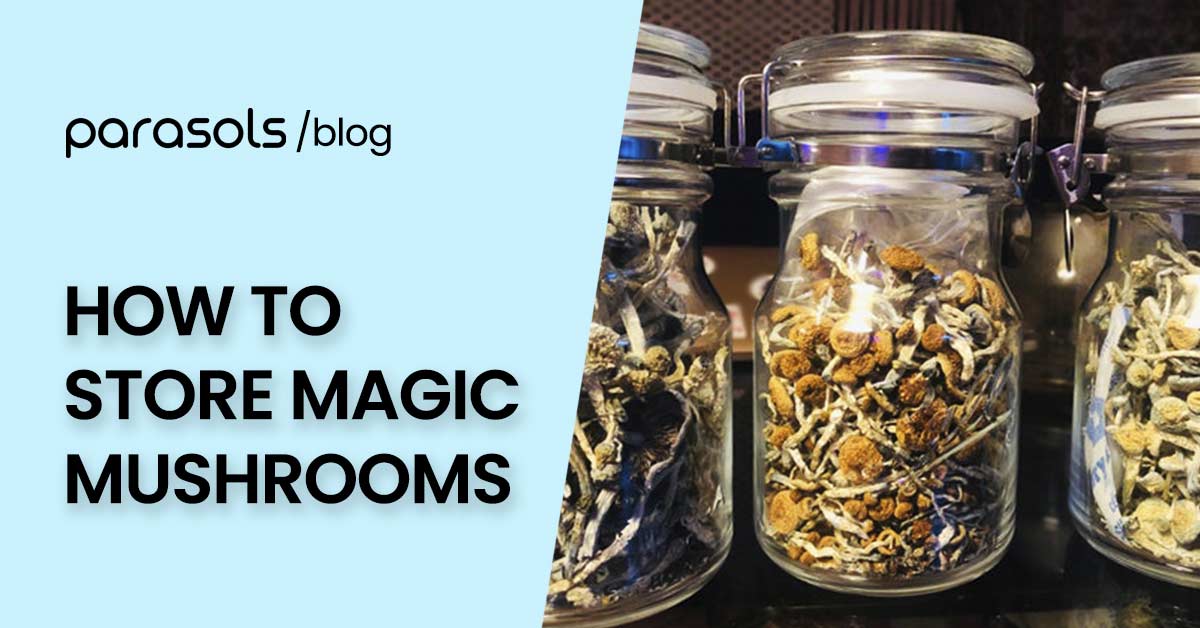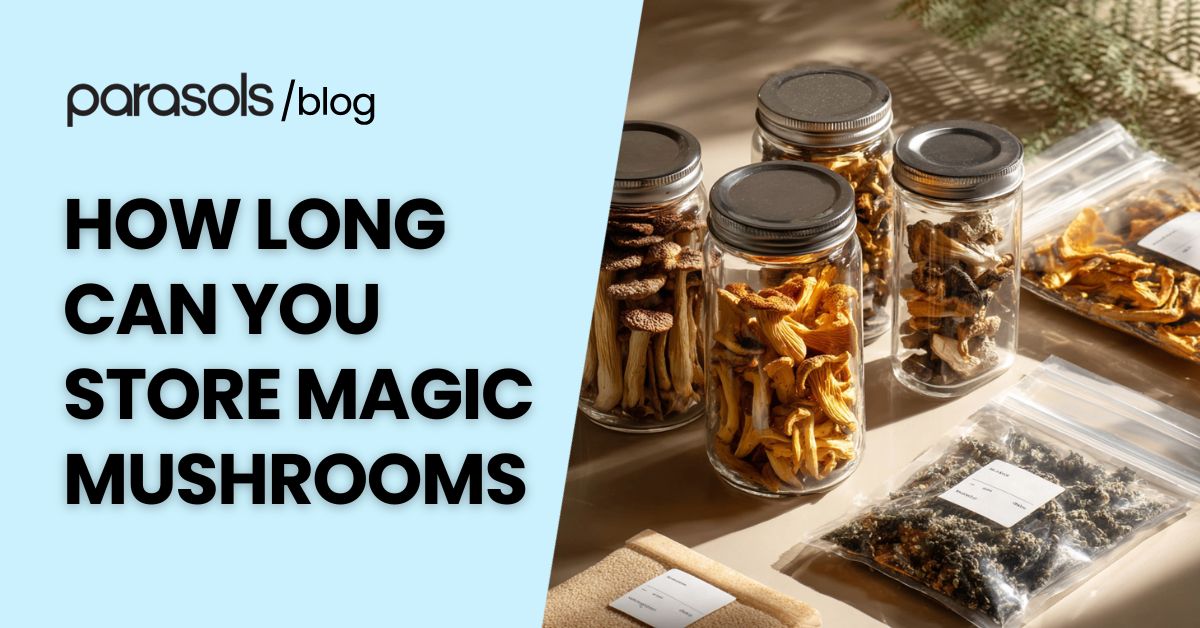Have you ever wondered how to grow magic mushrooms? Growing magic mushrooms at home has become an increasingly popular practice among curious cultivators and aspiring mycologists. With the right techniques, sterile conditions, and a basic understanding of spores, mycelium, and substrates, even beginners can successfully navigate the cultivation process.
Whether you're curious about the ongoing research into the therapeutic potential of psilocybin or simply fascinated by fungi, this guide will walk you through three essential points, to ensure a successful mushroom grow, from spore syringe to fruiting bodies.
Key Factors for Cultivating Magic Mushrooms
To cultivate magic mushrooms successfully, it's crucial to control the environment, use clean techniques, and understand the life cycle of the fungus. Here are the key factors to keep in mind:
- Spore or Liquid Culture Selection: Start with a reliable spore syringe or liquid culture to ensure strong mycelium growth.
- Sterility: Maintain sterile conditions during inoculation and colonization to prevent contamination from competing fungal spores or bacteria.
- Substrate Preparation: Use nutrient-rich substrates like brown rice flour, coffee grounds, or bulk substrates to feed the mycelium.
- Temperature and Humidity: Optimal mushroom growth requires steady warmth (around 70–75°F) and high humidity levels, especially in fruiting chambers or monotubs.
- Fresh Air Exchange: Proper air exchange is essential to prevent CO₂ buildup and support the development of fruiting bodies.
1. Preparation Process
Before you begin growing magic mushrooms, proper preparation is essential to create the right conditions for successful cultivation. Here's what to focus on at the start.
Choosing Your Substrates
Choosing the right substrate is a critical step in mushroom cultivation, as it provides the nutrients needed for mycelium to colonize and eventually fruit. Different substrates suit different skill levels and mushroom species.
- Brown Rice Flour (BRF) and Vermiculite: Ideal for beginners using the PF Tek method; easy to prepare and widely accessible.
-
Coco Coir and Vermiculite: A bulk substrate often used in monotub setups; offers great moisture retention and structure.
- Manure-Based Substrate: Common for advanced growers cultivating psilocybin mushrooms; rich in nutrients but more prone to contamination.
- Straw: Often used for species like oyster mushrooms; requires pasteurization and works well in grow bags or trays.
- Coffee Grounds: Nutrient-rich but should be mixed with other materials due to their tendency to contaminate if not properly sterilized.
How to Sterilize the Substrate

Sterilizing your substrate is crucial to eliminate unwanted microorganisms that could outcompete your mushroom spores. Here are the most common methods used by home growers:
- Pressure Cooker Sterilization: The most effective method for BRF jars and grain spawn. Heat at 15 PSI for 60–90 minutes to ensure complete sterilization.
- Boiling (Steam Sterilization): A low-tech option for beginners using PF Tek. Jars are boiled in a covered pot for 90–120 minutes.
- Hot Water Pasteurization: Ideal for bulk substrates like straw or manure. Soak the substrate in hot water (150–170°F) for 1–2 hours to reduce contaminants without killing beneficial microbes.
- Oven Pasteurization: Substrates are placed in oven-safe bags or trays, covered with foil, and baked at 160–180°F for 1–2 hours.
- Hydrated Lime Pasteurization: A cold method used for straw; the substrate is soaked in a high-pH water solution to suppress contaminants.
Various Tools for Sterilization
Using the right tools for sterilization helps ensure a clean, contamination-free environment for successful mushroom cultivation. Here are the essential tools commonly used:
- Pressure Cooker or Autoclave: Crucial for sterilizing grain spawn or PF Tek jars under high pressure and temperature.
- Large Stock Pot with Lid: Used for steam sterilization or boiling substrates when a pressure cooker isn’t available.
- Oven: Suitable for dry heat pasteurization, especially with bulk substrates like coco coir or straw.
- Thermometer: Monitors water or oven temperatures during pasteurization to maintain the proper range.
- Hydrated Lime: Used in cold pasteurization methods for straw or similar materials.
- Aluminum Foil: Covers jar lids or trays during sterilization to prevent airborne contamination.
- Mason Jars or Filtered Grow Bags: Sterilization containers that allow gas exchange while keeping out contaminants.
2. Cultivation Process
Once your substrate is sterilized and ready, the cultivation process can begin. This stage involves several key steps, each critical to producing healthy and potent mushrooms.
- Spore Inoculation: Using a sterile spore syringe or liquid culture, inject spores into the substrate through small holes in the jar or grow bag. Always work in a clean environment to avoid contamination.
- Colonization: During this phase, mycelium spreads throughout the substrate, turning it white and dense. Keep the container in a dark, warm area (70–75°F) with limited air exchange.
- Fruiting: Once fully colonized, expose the substrate to fresh air, light, and high humidity. This triggers the formation of fruiting bodies—mature mushrooms—often in a fruiting chamber or monotub.
- Harvesting: Mushrooms are ready to harvest when the veil under the cap begins to tear. Gently twist and pull or cut at the base to avoid damaging the mycelium for possible future flushes.
3. Post Cultivation Process
After harvesting your mushrooms, proper handling and storage are essential to preserve potency and prevent spoilage. Here’s what to do next.
Drying Magic Mushrooms
Drying magic mushrooms helps preserve their potency and extends shelf life, making them easier to store and dose accurately. Here’s how to dry them properly:
- Pre-Dry: Place freshly harvested mushrooms on a paper towel in a well-ventilated area for 24–48 hours to reduce surface moisture.
- Use a Dehydrator: Set a food dehydrator to 95–110°F and dry mushrooms until they are cracker-dry—snapping easily rather than bending.
- Avoid Oven Drying: High temperatures can degrade psilocybin and psilocin, reducing potency.
- Desiccant Chamber (Optional): For extra dryness, store mushrooms in an airtight container with a food-safe desiccant after dehydrating.
Storing Magic Mushrooms
Proper storage of magic mushrooms is crucial to maintain their potency, freshness, and safety over time. Here's how to store them effectively:
- Use Airtight Containers: Store dried mushrooms in mason jars or vacuum-sealed bags to protect them from air and moisture.
- Add Desiccants: Include food-safe silica gel packets to absorb residual moisture and prevent mold.
- Keep in a Cool, Dark Place: Store containers in a cupboard, drawer, or refrigerator—away from light, heat, and humidity.
- Label Clearly: Include the strain name and date of harvest to track freshness and potency over time.
- Avoid Freezing Fresh Mushrooms: Only freeze them after drying to prevent cell damage and potency loss.
Final Thought

Growing magic mushrooms at home is a rewarding process that combines science, patience, and precision. By mastering preparation, cultivation, and post-harvest techniques—from choosing the right substrate to drying and storing your harvest—you can ensure safe, potent, and successful results. With practice and care, even beginner growers can become skilled cultivators of these fascinating fungi, which have been the subject of research for potential therapeutic uses.
Frequently Asked Questions
What type of mushroom species are best for beginners?
Psilocybe Cubensis is the most commonly recommended species for beginners due to its resilience, wide availability of spores, and ease of cultivation in a home setting.
How long does it take to grow magic mushrooms from start to finish?
The full cycle typically takes 4 to 8 weeks, depending on conditions like temperature, substrate, and strain. This includes inoculation, colonization, fruiting, and harvesting.
Can I grow magic mushrooms without a grow kit?
Yes, many cultivators build DIY setups using materials like mason jars, grow bags, and monotubs. While grow kits simplify the process, they’re not required if you’re comfortable sterilizing and preparing your own substrate.
Do magic mushrooms need light to grow?
Indirect light helps trigger fruiting, but they don’t require intense light like plants. A 12-hour on/off cycle of ambient or low-wattage lighting is usually sufficient.
Is it legal to grow psilocybin mushrooms at home?
Laws vary widely by country and region. In many places, cultivation of psilocybin mushrooms is illegal, even for personal or therapeutic use. Always research and follow your local laws.
Can I reuse my substrate for another grow?
In most cases, it’s best not to reuse substrate, as it’s often depleted of nutrients and may harbor contaminants. Starting fresh ensures healthier growth and reduces the risk of failure.



Leave a comment
All comments are moderated before being published.
This site is protected by hCaptcha and the hCaptcha Privacy Policy and Terms of Service apply.